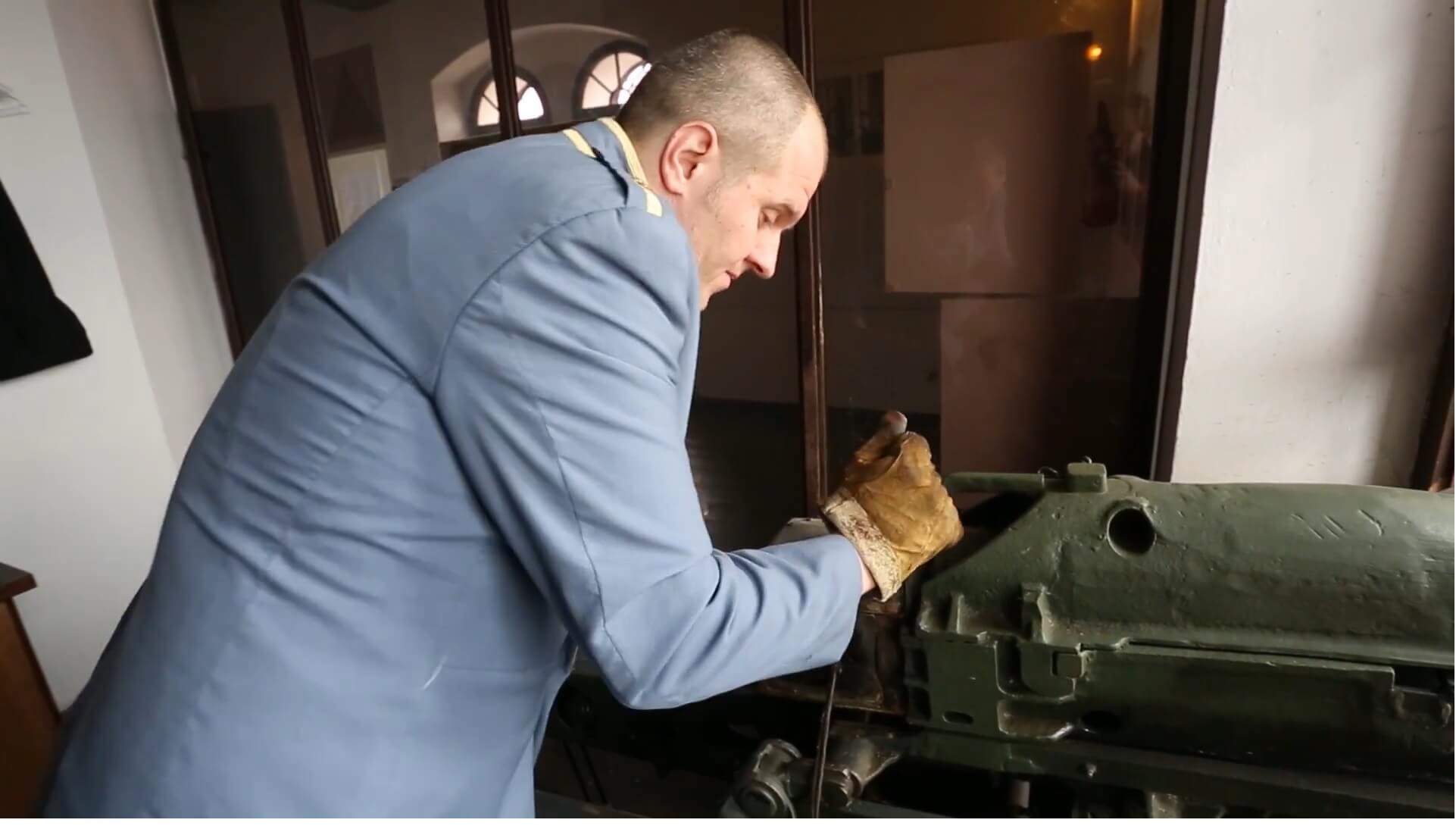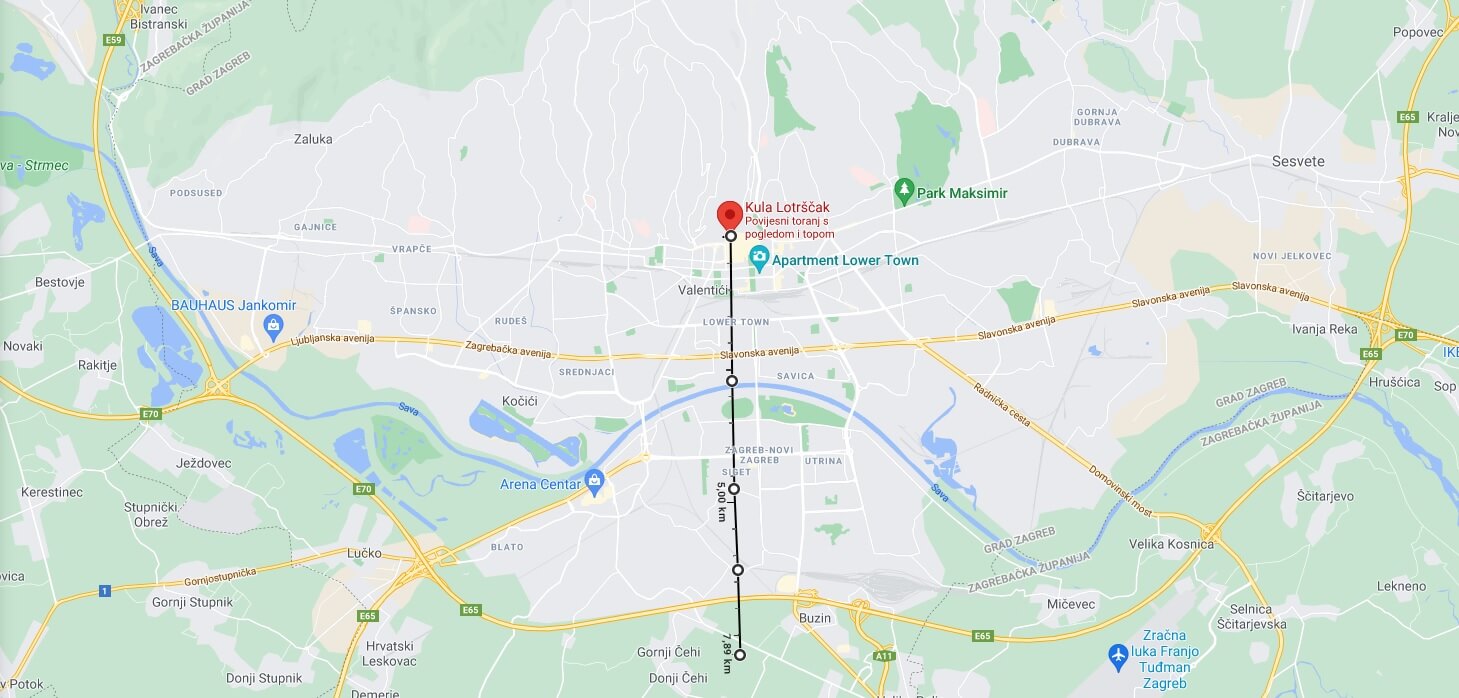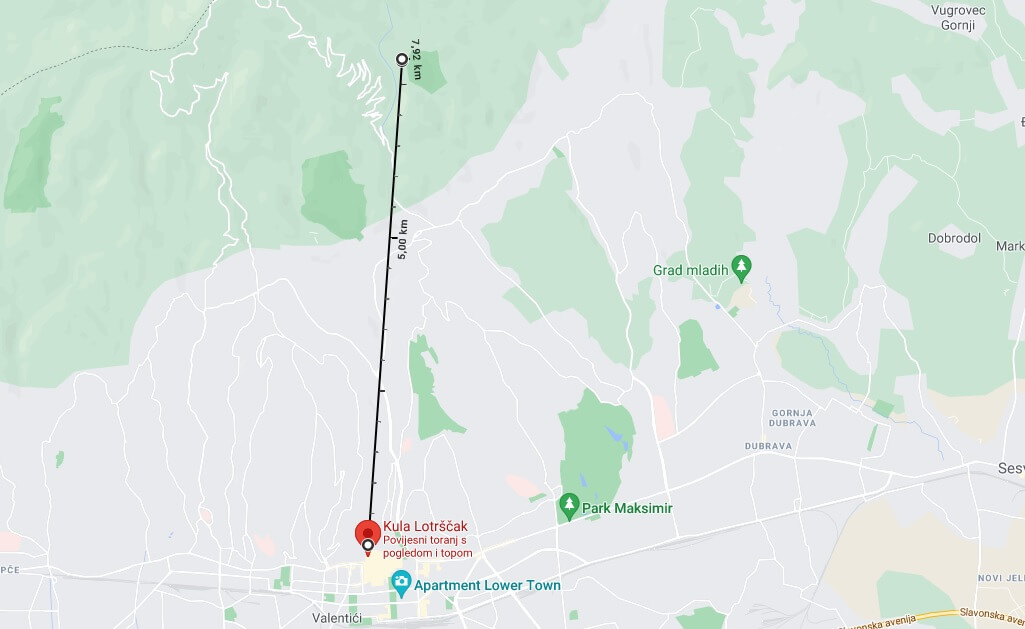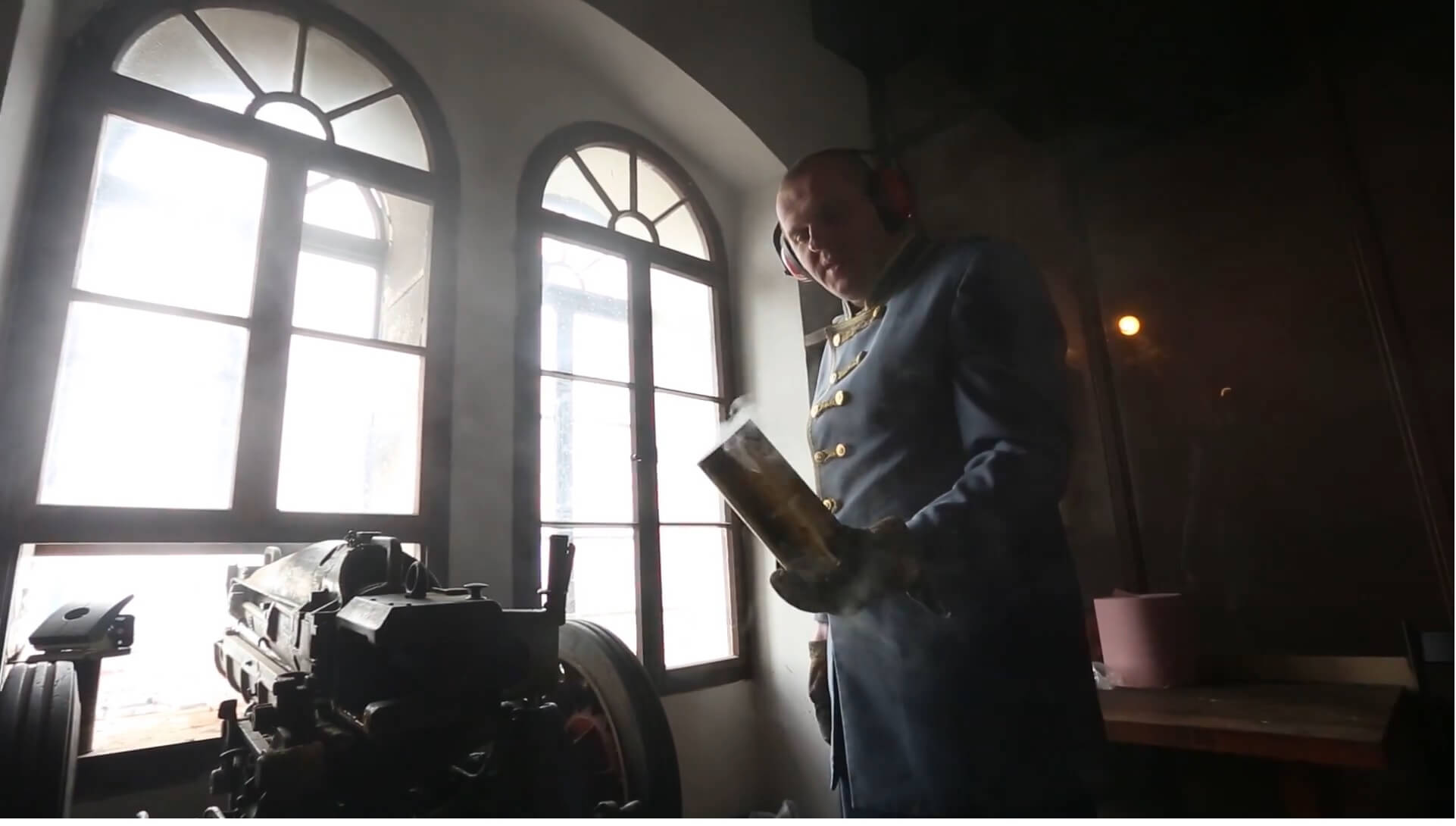How Far Can Zagreb Grič Cannon Fire? Ideal Conditions View of the Fire Range
July 21, 2021 - Ever wondered about the Zagreb Grič Cannon fire? TCN reporter Ivor Kruljac played with Google maps to provide an answer in ideal conditions.
While Zagreb Grič Cannon did not shoot at the time of writing this article, it is still one of the key symbols of Zagreb, and memories of its bang during midday is a vital part of the living in Zagreb experience.
As TCN previously wrote, the Grič Cannon was first introduced on January 1, 1877, and was located at the State's Meteorology department, back in the times when Croatia was part of the Austro-Hungarian Monarchy. It wasn't until 1927 that it was moved to Lotršćak, where it is situated to this day. In addition, the current cannon serving this purpose is actually the fifth to do the job and was donated to Zagreb by the Yugoslavian National Army (JNA), during Universiade.
Apart from signaling noon, the old legend says the Grič Cannon also served a defensive purpose. As TCN previously wrote, legend has it that the Ottoman commander Hasan Pasha (Hasan Paša) settled his army along the coast of the Sava river, in today's area of Novi Zagreb. He was preparing to cross the river and invade the city, but before that, he was about to have lunch, and Zagreb fired a cannon in the Ottomans' direction, close to Hasan, blasting a chicken he wanted to eat. The shot scared the hell out of the Ottomans, and they retreated, leaving Zagreb totally intact.
The legend itself is part of a book titled ''The Grič Cannon legend'' in which writer Dubravko Horvatić has gathered 20 Croatian legends, and the book is a mandatory book report title for Croatian pupils in the third year of elementary school.
 Preparing the cannon, screenshot / PIXSELL
Preparing the cannon, screenshot / PIXSELL
Legend vs facts
With the story taking place way back in the 16th century, it's obvious the tale is just a legend as the cannon wasn't introduced until the 19th century. Still, it's a cool story, and a bit of a twisted mind can't but help think: what's the range you could actually shoot with the Grič Cannon?
As the Wikipedia page says, and as a member of the Zagreb Tourist Board in Lotrščak tower confirmed to this sleuth reporter, the current cannon's range is 7,929 metres (almost eight kilometres), and the sound of the blast has a solid 140 dB.
Legend says Hasan Paša was on the coast of the Sava river, which means he was in southern Zagreb, and sure enough, the Grič cannon is facing south from Lotrščak. The cannon floor also has windows looking in each direction, meaning you could move the cannon to north, west, or east.
When playing with Google maps distance measuring tools, you can see that the smallest distance between the Sava river and Lotrščak is, give or take, about 3,1 kilometres. So, the current cannon, under the right angle, could easily make that shot.

The distance between Fort Lotrščak and Sava river, screenshot / Google Maps
Apart from the possibilities of buildings and hills messing up the shot, there are other things that need to be taken into consideration. As the Department of the Army U.S. Marine Corps identified back in 1996, in their manual, there are many factors that affect artillery fire.
Muzzle velocity, projectile weight, range wind, air temperature, air density, even the rotation of the Earth, not to mention the overall condition of the barrel, all of which are challenges that could limit the cannon's full potential. And yes, Google maps isn't really the most precise tool on the planet, but let's take a shot in the dark and see how far the Grič cannon could actually fire (keep in mind these projections are made solely based on the maximum range, and the factors aren't taken in account but are mentioned for the sake of trivia knowledge).
South! Aim! Fire!
Let's start from the cannon's current position. Assuming no buildings, hills, or anything else gets in the way, and you're a physics genius that managed to isolate yourself in Lotrščak with live ammo and achieve a clear straight shot, your cannonball makes an impact all the way in line with Donji Čehi (but a bit away to the east from that place). Donji Čehi, along with Gornji Čehi, used to be independent villages but are today part of the City of Zagreb. With only 1,72 km2 of length, the place is inhabited by 232 residents, based on a 2011 census.

Grič Cannon maximum range to the south, screenshot / Google Maps
West! Aim! Fire
Continue clockwise and set your cannon to take a shot towards the west, with a range of little under eight kilometres. You can score all the way to Krnska street in Gajnice. Krn is both a name of a mountain and a peak (2244) in neighbouring Slovenia. The mountain is a part of the Triglav National Park in Slovenia (and if this side note makes your attention turn to Slovenia, be sure to check our friends at Total Slovenia News). Gajnice is a neighbourhood in Zagreb that is inhabited by around 10,000 residents. The neighbourhood is notorious for its pretty lousy connection with the rest of the Zagreb, and local residents often complain about infrequent buses that connect them to Črnomerec from where they can travel to the city centre. Well, at least, the centre doesn't aim at them with a cannon.

Grič Cannon maximum range to the west, screenshot / Google Maps
North! Aim! Fire!
The new target, or perhaps better to say lucky shot, lies towards the north. Don't worry about Medvednica mountain getting in the way of a clear shot towards Zagorje, as the range isn't long enough. The shot will hit Medvednica mountain, more precisely, to the close proximity of Tusti Vrh. This location is 648 metres above sea level and serves as a stand for a communication station with some antenna polls. But, there's no need to shoot the place up and destroy a lovely piece of nature, which also serves as an important social role in regards to telecommunication. Instead, you can visit the place as the Gračani trail leads there.

Grič Cannon maximum range to the north, screenshot / Google Maps
East! Aim! Fire!
Finally, it's time to ruin someone's day in east Zagreb (fortunately, no person was hurt during these simulations in reality). Specifically, this applies to whoever lives in Retkovec III near Bruma Interijeri d.o.o., a company specialised in woodwork.
Petkovic is a neighbourhood that is part of the Dubrava district. It's mostly a residential place, like much of eastern neighbourhoods considered to be a bit of a rough area to live in. Still, things aren't as bad as they were as before.

Grič Cannon maximum range to the east, screenshot / Google Maps
Shooting blanks
Again, it's worth noting these projections aren't accurate science and imply conditions which are perfect. Of course, in an ideal world we wouldn't need firearms and everyone would be living in peace. In reality, where these ideal conditions don't apply, residents of the aforementioned areas, but also citizens in general, can be relaxed, as the ranges are irrelevant.
 Shots fired aftermath, screenshot / PIXSELL
Shots fired aftermath, screenshot / PIXSELL
''It's worth noting the cannon is modified, and it can't fire live ammo,'' warned the Zagreb TB official, who was a bit puzzled as to why I would even ask her for the potential range of a weapon overlooking the Croatian capital from Fort Lotrščak. But, as I'm sure any researcher will confirm, scientific curiosity often calls for asking controversial questions.
Learn more about Zagreb on our TC page.
For more about history in Croatia, follow TCN's dedicated page.
Bliznec Forest Trail Example of Best Practice in UNWTO's Accessible Tourism Book
ZAGREB, 30 May, 2021 - The UNWTO's recent publication entitled "Accessibility and Inclusive Tourism Development in Nature Areas - Compendium of Best Practices" cites the Bliznec Forest Trail in Medvednica Nature Park as an example of accessible tourism in nature areas, the Croatian National Tourist Board (HTZ) has reported.
This forest trail near the capital city of Zagreb is the first educational trail in Croatia fully adapted to people with disabilities.
The HTZ director Kristjan Staničić has recently stated that for more than a year the HTZ, in cooperation with the UNWTO and its Working Group on Accessible Tourism, has been working on the project of inclusive and accessible tourism.
"We are proud that Croatia has been added to this important publication about the best practices in inclusive and accessible tourism in nature areas," Staničić said.
The 800-metre-long Bliznec trail, along the Bliznec stream in Medvednica, is completely adjusted to visitors with disabilities.
"Apart from being completely available to people in wheelchairs, and therefore families with small children, all texts are available in Braille so that the blind and the people with poor eyesight can read them. To prevent them from being damaged, the texts in Braille are placed in unique 'Forest books'. The trail is primarily made of wood and it blends nicely with its surrounding. It finishes near the sawmill Bliznec where there is now a catering facility," according to the information provided on on the Medvednica Nature Park's website.
For more on travel in Croatia, follow TCN's dedicated page.
For more news about Croatia, CLICK HERE.


